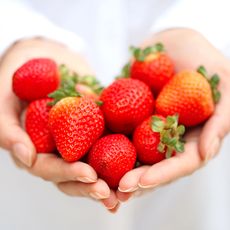What Is Pea Aphanomyces Disease – Diagnosing Aphanomyces Root Rot Of Peas

Aphanomyces rot is a serious disease that can affect pea crops. If unchecked, it can kill small plants and cause real growth problems in more established plants. Keep reading to learn more about aphanomyces root rot of peas and how to manage peas with aphanomyces root rot disease.
What is Pea Aphanomyces Root Rot?
Aphanomyces root rot of peas, sometimes also called common root rot, is a disease caused by the fungus Aphanomyces euteiches. It can be very devastating to pea crops. It lives in the soil, and symptoms are rarely seen above the soil line unless conditions are very damp, or the infection is severe. When young seedlings are infected, they die quickly. When larger pea plants are infected, they usually grow poorly and have trouble forming seeds. Plant tissue often becomes soft, water soaked, and slightly discolored. Outer roots surrounding the taproot may fall off.
What Causes Pea Aphanomyces Disease?
Pea aphanomyces root rot will thrive in all temperatures at which pea plants grow, though it spreads more quickly in warmer weather. It prefers wet conditions. Spores of the fungus enter the soil through broken down plant tissue and can remain dormant for years.
How to Treat Peas with Aphanomyces Root Rot
Aphanomyces root rot can often be combated by liberal fertilization-- if roots are encouraged to grow fast and healthily, they should be able to outstrip the decay of the disease. Nitrogen can be applied to suppress the spread of the fungus. Since the fungus thrives in wet conditions, the most important aspect of prevention is good drainage. It’s a good idea to rotate pea crops at least every three years. If your garden has experienced a particularly damp growing season, add another year or two to your rotation to give the spores time to die out.
Gardening tips, videos, info and more delivered right to your inbox!
Sign up for the Gardening Know How newsletter today and receive a free copy of our e-book "How to Grow Delicious Tomatoes".

The only child of a horticulturist and an English teacher, Liz Baessler was destined to become a gardening editor. She has been with Gardening Know how since 2015, and a Senior Editor since 2020. She holds a BA in English from Brandeis University and an MA in English from the University of Geneva, Switzerland. After years of gardening in containers and community garden plots, she finally has a backyard of her own, which she is systematically filling with vegetables and flowers.
-
 How To Grow Strawberries From A Strawberry: All You Need To Cultivate Yummy Fruits
How To Grow Strawberries From A Strawberry: All You Need To Cultivate Yummy FruitsYou may know how to grow strawberries from small plants or runners – but what about growing from the fruit? Here we show you how to grow strawberries from a strawberry
By Mary Ellen Ellis
-
 Best Tomatoes For Containers: 10 Tastiest Varieties For Plentiful Produce In Compact Areas
Best Tomatoes For Containers: 10 Tastiest Varieties For Plentiful Produce In Compact AreasThese are the best tomatoes for containers that prove you don't need to have a large space or elaborate garden to grow delicious produce.
By Bonnie L. Grant